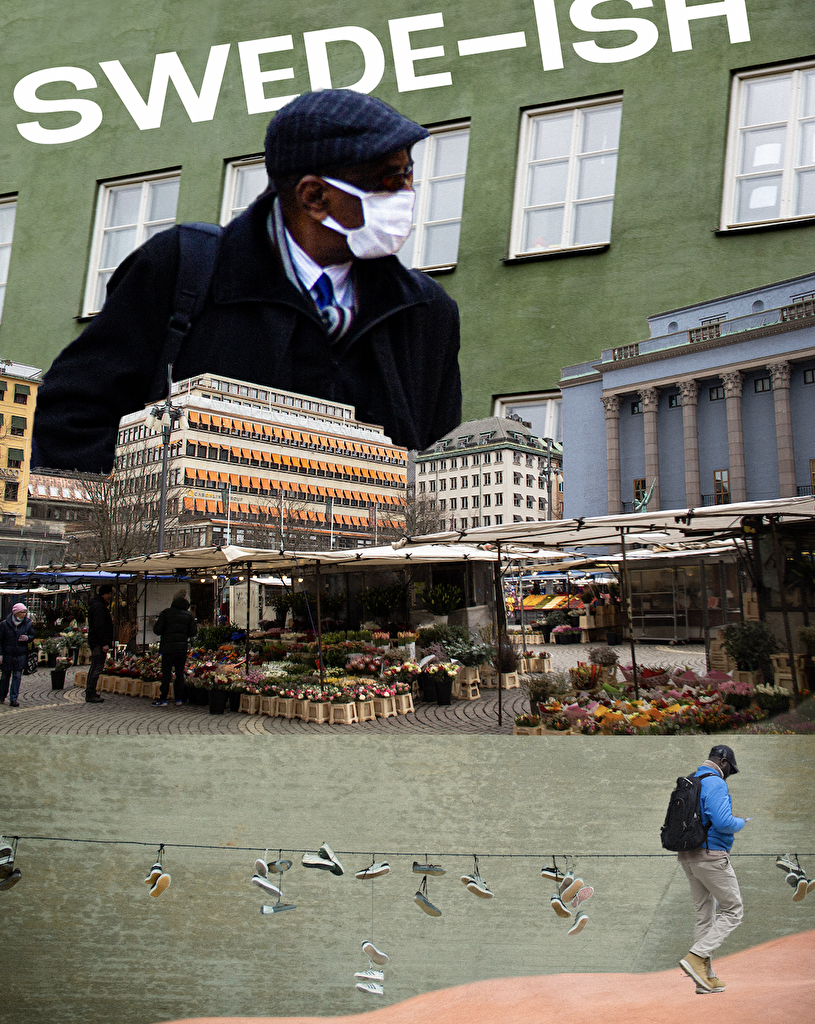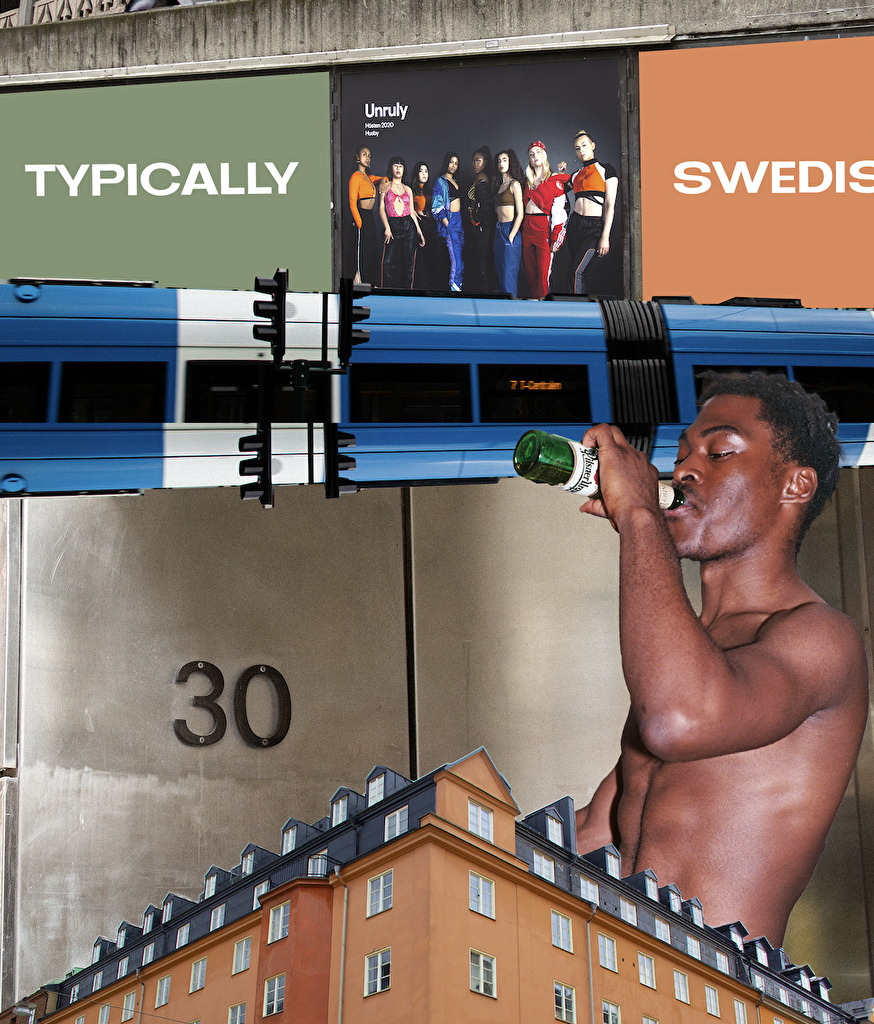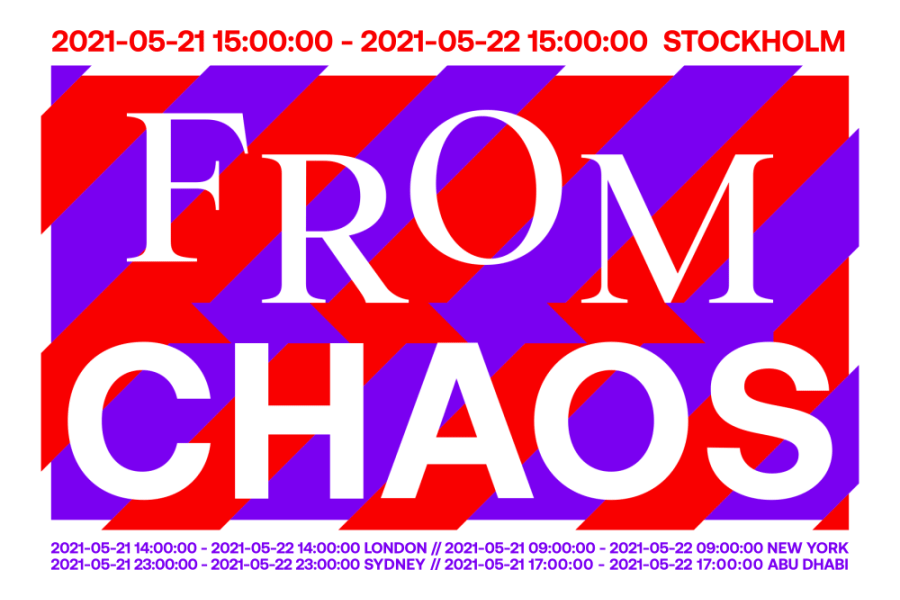This article is more than three years old. Take a look at our current courses and programs!
Inclusion at the core of Berghs’ Advanced Advertising students’ project

We caught up with Andrea Davis Kronlund, a Stockholm-based photographer, artist, and co-founder of Krull Magazine about her experience teaching in the Berghs Advanced Advertising Course. She spoke about how respect and empathy can help us see each other, and why that’s good for everyone. Andrea challenged our Art Direction students in the course with a couple of complex briefs. The results are now showcased on Krull Magazine.
Hi Andrea! Tell me a bit about yourself.
– I was born in Jamaica, raised in New York, and, together with my two children and husband, moved to Sweden about eighteen years ago. I have a background as a photographer, artist, and teacher. I worked a lot in fashion and music photography. I'm always full of curiosity and creative ideas, so I constantly come up with projects to keep me busy. Right now, I'm expanding on a long-running art series called Hairpiece. The series is inspired by how black people in minority western societies navigate personal issues of beauty, culture, artistic expression, identity, place, professionalism, and acceptance around their hair. Two self-portraits from the series are currently being shown on a billboard in The Billboard Collective's exhibition in Los Angeles. The exhibition runs until the end of April.
What's the story behind Krull Magazine and why is it so important?
– Krull Magazine was started in 2016 by a group of women who thought that representation of the Afro-Swedish community in the broader Swedish media was lacking. Especially in the area of fashion and beauty, which are important societal markers of identity. Not seeing ourselves in definitions of what is beautiful is of concern, not only for ourselves but also for our children and future generations of black children in Sweden. We aim to normalize the black diasporic experience.
There was much discussion in the community at the time, and we thought that instead of just talking about it, we should do something active. Heck, just being seen would be a step in the right direction. As black creatives, we also knew how difficult it is to break through to show what we can do. So, we wanted a platform where we could invite other creatives to shine. The founders all had different experiences and had worked in culture, communications, and fashion, so we felt we definitely had the skills to start something of our own. So, we pooled our creative resources. Websites are more accessible than print and made it possible for us to do something right away, without any start-up capital. So we jumped in and decided to launch Krull as an experiment to see if there was interest. There was.
The Berghs Advanced Advertising students worked with you on two different briefs. Tell me about that.
– I was asked to lead the students in the Art Direction track in art directing photography. I always like to have something concrete that my students can workshop and work toward a finished product. I thought about the infamous tone-deaf, advertising faux-pas in the recent past with brands like Pepsi, H&M, Gucci, Prada, etc. Not to mention the missteps of some of the advertising for some prominent Swedish cultural brands. I decided that there was an opportunity for the next generation to think outside of the hegemonic box. To put themselves in shoes that maybe they hadn't thought about before or were not available to them. I believe empathy would have gone a long way to ameliorate a lot of the mistakes mentioned above.
To build on this idea of empathy, I had the students work on photography briefs even though they're not photographers themselves. I wanted them to experience a bit of what the photographer grapples with when making images that tell a particular story.
Further, the briefs needed to be carried out with the perspective of Krull in mind. Krull uses fashion as an allurement. Its aesthetic is based on the Afro-Swedish identity, which was embedded in the briefs. Our face out and target audience are chiefly members of the African diaspora. This meant that the students would have to contact people of color as subjects or define a concept outside of their own identity to fulfill the briefs. I deliberately left the briefs very open within the framework of the idea. I wanted the students to develop their own solutions and didn't want to influence how they approached the subjects.
The first brief was "Intersectionality." Already being Afro-Swede is intersectional. But much of the movement for social justice, especially the Black Lives Matter movement (which has had a profound international impact), is being driven by people with a multiplicity of identities. Their demand for social justice is shifting expectations and forcing markets to take broader demographics into account than they have thus far.
The second brief was "Typically Swedish." There is a media stereotype of what "Swedish-ness" is and what a Swede looks like. However, like language, culture is not necessarily fixed, and it is always interesting to find out what external markers signal a particular identity. Afro-Swedes are not "typically Swedish" in Sweden. Still, they are seen by others as recognizably Swedish when they are outside of Sweden.
How has it been working with students from Berghs in this project?
– It's been great challenging the students. I think they might have been a little scared, maybe uncomfortable at first, especially given the short turnaround time and unfamiliarity with the subject matter that they had. But they met the challenge with bravado, took the plunge, and worked through the difficulties. One group even ended up convincing an Afro-Swede, and an Afro-European that they met on the street to model for eight hours. And now have two new friends! I was very impressed by that. It echoed the "to the streets" modus operandi when we started Krull and needed a larger pool of representation than we could get from established modeling agencies.
How was the result?
– The students worked really well together and complemented each other's talents. I was impressed with what they accomplished in a day and a half. Their solutions involved personally defining what the terms in the concept meant and then asking people they encountered what that meant for them. This was a good start in building an understanding.
Technically, the students are quite proficient. In two stories, they made good use of layered imagery and collage as visual metaphors for illustrating the complexity they found, both in intersectionality and what they see as Swedish. The third story confronted the term head-on and sought the universality found in the term "Typically Swedish" by creating a kind of manual for the newcomer. Overall, there was skillful use of colors and patterns to create a nice flow through the stories.
Check out some of the students’ results here: KrullMagazine




